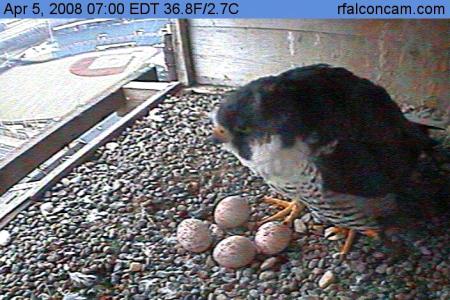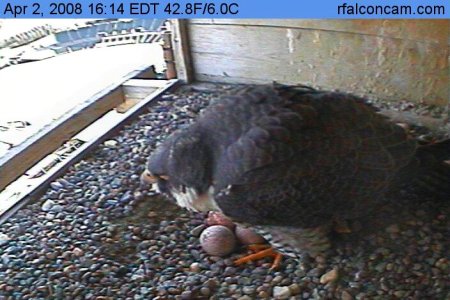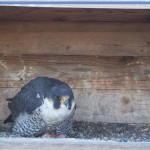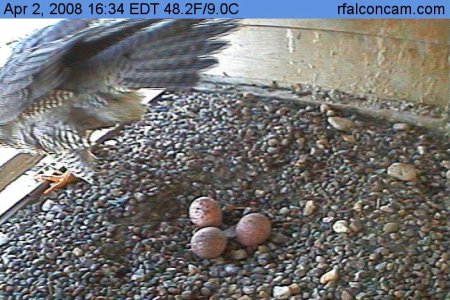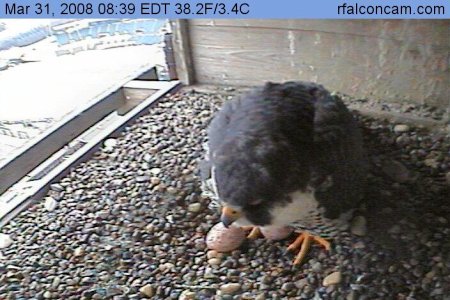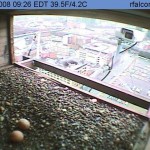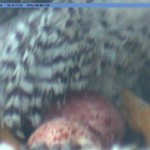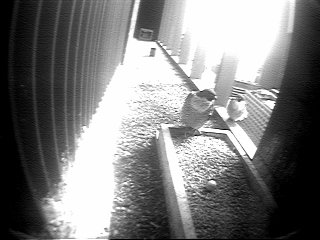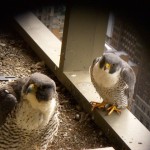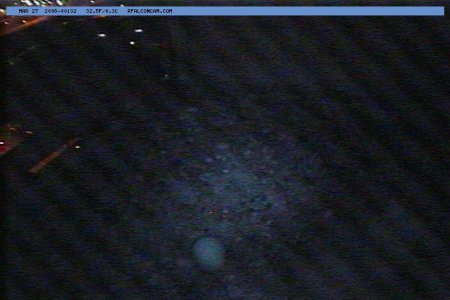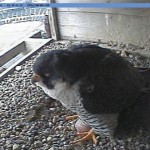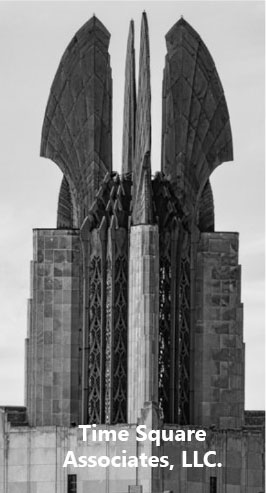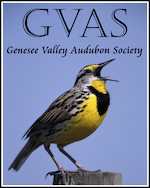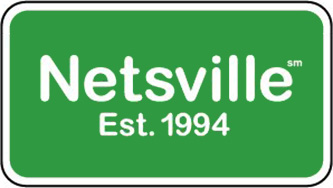
Here at Imprints we receive a lot of questions from our readers. We’re glad to know there are so many curious people who want to know more about Mariah and Kaver, so keep the questions coming!
Now that Mariah’s in full egg-laying mode, I thought it would be a good time to address some of your questions related to reproduction. We covered some of this territory in last year’s posts on egg laying, and incubation and hatching, but you’re clever enough to have come up with some new questions, so here goes!
We’ve been asked many times about how long Mariah will continue to lay her eggs. After all, she’s been reproducing for 11 years now. So just how long is a Peregrine productive?
Well, that all depends on how long Mariah lives. Unlike human females, Peregrines don’t go through menopause. Once they reach reproductive maturity (typically in their second year), they can begin laying viable eggs, and they’ll continue to do so throughout their lives. Reproduction is one of the falcon’s strongest natural drives, and biologically speaking, it’s one of their primary functions. So, as long as Mariah is with us and has a mate and a suitable territory, we should be able to expect that she’ll continue to lay eggs and raise young.
It is true that as Peregrines age, they may not always lay viable eggs, but eggs can fail for a number of reasons that are not related to age. As we saw in 2006, injury may prevent the eggs from being properly incubated. In 2002, while Mariah was presumably in her reproductive prime, only 2 of her 4 eggs hatched. And last year, one of her five eggs mysteriously disappeared. Still, Peregrines in captivity have continued to lay eggs for as long as fifteen years or more, so we think Mariah still has many good years of motherhood left to her.
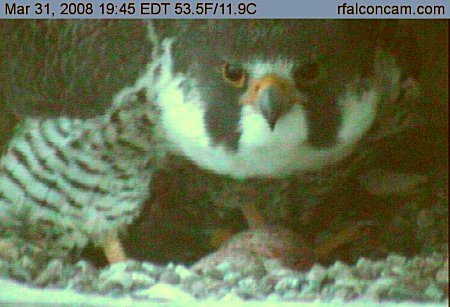
Another oft-asked question is: How does Mariah know how many eggs to lay?
Peregrines live a dangerous life. In the wild it takes nearly all of their energy, and a dose of good fortune to make their yearly migrations and return to their home territories to nest. Then they have to deal with availability of food, and external threats like predators and even other falcons who want to muscle in on their territory.
Fortunately, Peregrine females have evolved to take all of this into account during their nesting cycle. The lengthening of the day and warmer temperatures kick-starts their reproductive cycle by stimulating the release of hormones into their bodies. When falcons mate, fertilization of the ovum doesn’t take place right away. Instead, Mariah stores Kaver’s sperm until she’s ready to fertilize her eggs.
To figure out when she’s ready, she determines whether her environment is safe and free from stress, and how much food is available. If prey is plentiful and hunts are successful most of the time, she’s likely to lay more eggs than if food is difficult to come by. She probably doesn’t know the exact number of eggs to lay, but the average for Peregrines is 3-7, with 3 or 4 being typical. Believe it or not, forming the egg shells takes a lot of calcium out of her body, so the lack of calcium may trigger her to stop laying and begin incubating.

Finally, some of you have wondered about the fact that most of Mariah’s offspring have been female.
First a little background… WARNING: Science Alert!
At Harvard Univeristy back in 1973, a biologist named Trivers and a math whiz named Willard had a theory that the ratio of male to female offsping produced by a given pair of animals would tend to favor the sex that gave the best chance of future reproductive success (grandchildren and great-grandchildren) for the least additional investment of resources, that is, food and shelter (Whew– I ran out of breath writing that!). The Trivers/Willard Hypothosis was based on mammals, for which male offspring required more resources to produce. In mammals, healthy males are likely to produce many more offspring than unhealthy ones. So when times were good, mothers produced sons. Females, on the other hand, are likely to produce offspring even if they’re not in prime condition, so when the chips are down, it’s better to produce female offspring. The hypothesis is hard to prove, and many studies are inconclusive, but the theory seems to be generally well-regarded.
In Peregrines and other birds of prey, it is the females who are larger. They require more resources, but healthy female falcons are more likely to reproduce than unhealthy ones. In Australia, a couple of smart people named Penny Olsent and Andrew Cockburn actually studied Peregrines and other raptors using this hypothesis. They proposed a modified version of Trivers/Willard. It says that where prey is plentiful and the mother is healthy, more of her offspring would be females. At the Rochester site, we know that prey is very plentiful, and Mariah’s robustness is unquestioned. Combined with Kaver’s hunting prowess, it stands to reason that Mariah has all the resources she needs to produce the largest, most productive kind of offspring– daughters.
There you have it. A few more details about Peregrine reproduction.
-Jess
